
Test drive convertible Porsche Carrera S and Carrera 4S
The new sports car from Porsche has become even faster on the straight and understandable in corners, tried on the style of models from the 1970s, and also acquired modern safety systems. And it's all in an open-top body
It so happened that I get to know the 992 generation at the wheel of a convertible. The technical seminar dedicated to the new 911 coupe, which had to recall the basics of strength and thermodynamics, does not count. Then nobody let us drive us, they just teased us with a few laps in the passenger seat in the evening "Hockenheimring". And how can you get to know Porsche without the driving experience of a car?
It is still quite cool on the coast of Attica in early spring, especially in the morning hours. But this is where we will spend the whole day in company with the new 911 Cabriolet. Up until noon, the temperature overboard is frankly not conducive to open-top riding. Low sun and cold sea breeze force you to jump into the car and hit the road.
At the same time, I still want to get rid of the roof as soon as possible, making the silhouette of the car heavier. Convertibles usually don't look as striking as their hardtop counterparts, and Porsche is no exception. The tiny vents on the second row cannot be compared with the graceful curves of the side windows of the coupe. This is perhaps the most recognizable element of the 911 exterior, and is where the lion's share of the model's charisma lies. However, convertibles are not chosen for their correct shape. To be sure of this, you just need to wait for the right weather.
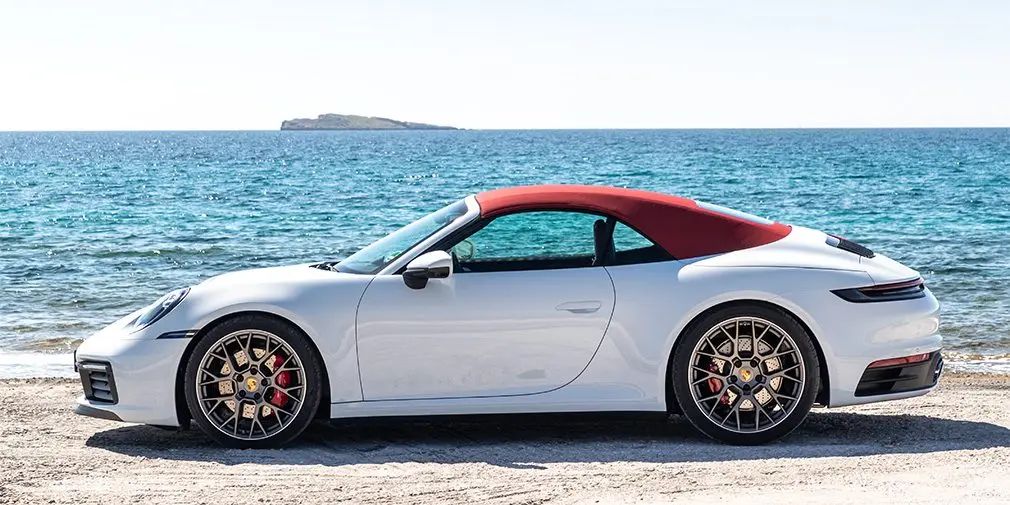
Soundproofing the soft-top 911 goes head to head with the coupe. With the roof up, even at high speeds, aerodynamic noise hardly penetrates the passenger compartment. My subjective feelings find their confirmation in the words of the Porsche aerodynamics engineer.
“We've worked hard to bring the aerodynamics of the convertible as close as possible to the coupe, and as a result we have achieved our goal. That is why it is so quiet inside the car, ”Alexey Lysyi explained. A native of Kiev, who began his career at the Zuffenhausen-based company as a student, he and his colleagues are responsible for the aerodynamic performance of all modifications of the new 911. And the adjustable dampers in the front bumper, and the mirrors of the new shape, and the door handles that retract inward are his job.
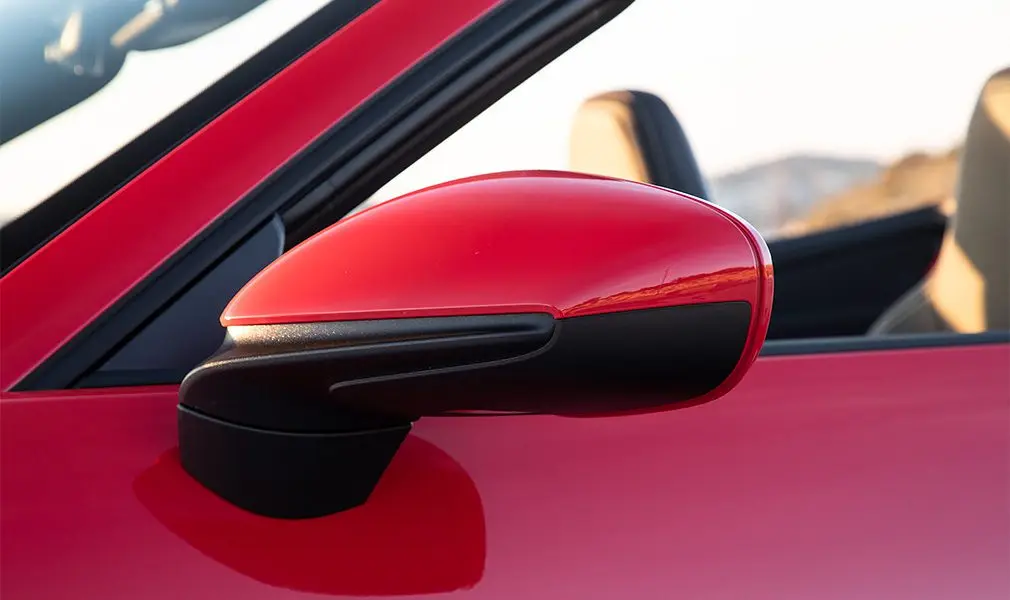
It was also possible to achieve a low level of aerodynamic noise due to the special design of the folding roof. Three magnesium alloy plates are hidden behind the soft awning, which made it possible to almost completely exclude vibrations of the folding mechanism at high speeds, as well as to increase the rigidity of the structure.
In general, the rigidity of both individual elements and the body as a whole is a key parameter in the development of any convertible. On the new 911 Cabriolet, the lack of a fixed roof overhead was partially compensated for with a pair of struts in the front and rear axle area and a steel windshield frame. Together with the folding roof mechanism itself, such measures added an extra 70 kg to the convertible compared to the coupe.
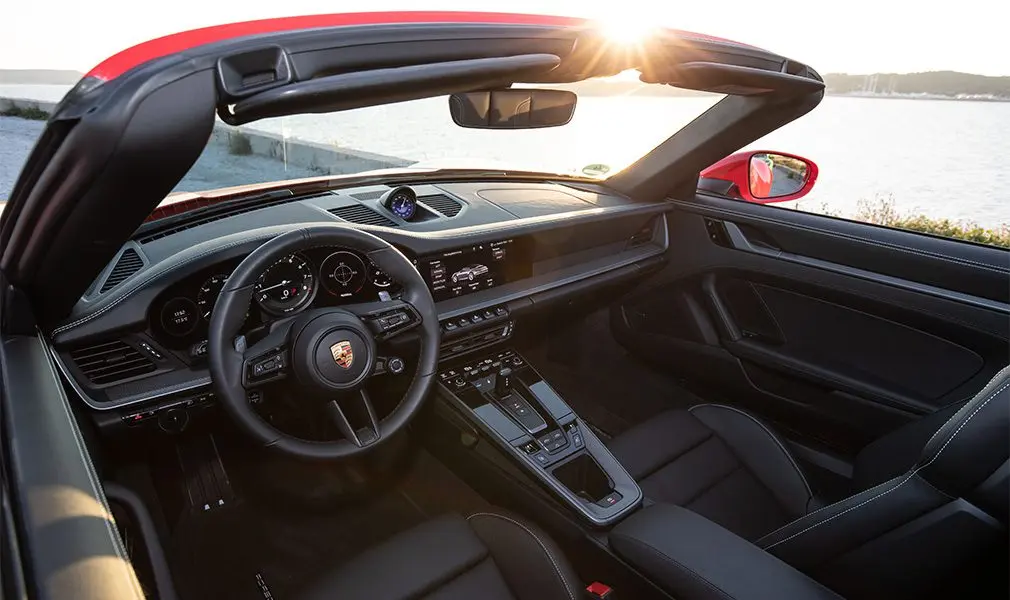
The main innovation in the chassis is the PASM adaptive dampers, available as an option for the first time on the 911 Convertible. The company admits that the performance of the previous generation of the adaptive suspension did not meet their internal standards for a convertible top vehicle, so the installation of such a system was not possible. Using its own software, Porsche was able to find the optimal settings for the convertible.
In addition to the most adaptive suspension, with which the 911's ground clearance is reduced by 10 mm, as a bonus, the car relies on a more aggressive lip on the front bumper, and the rear spoiler in certain modes rises to a greater angle compared to the base version. Such solutions increase downforce and make cornering behavior more stable.
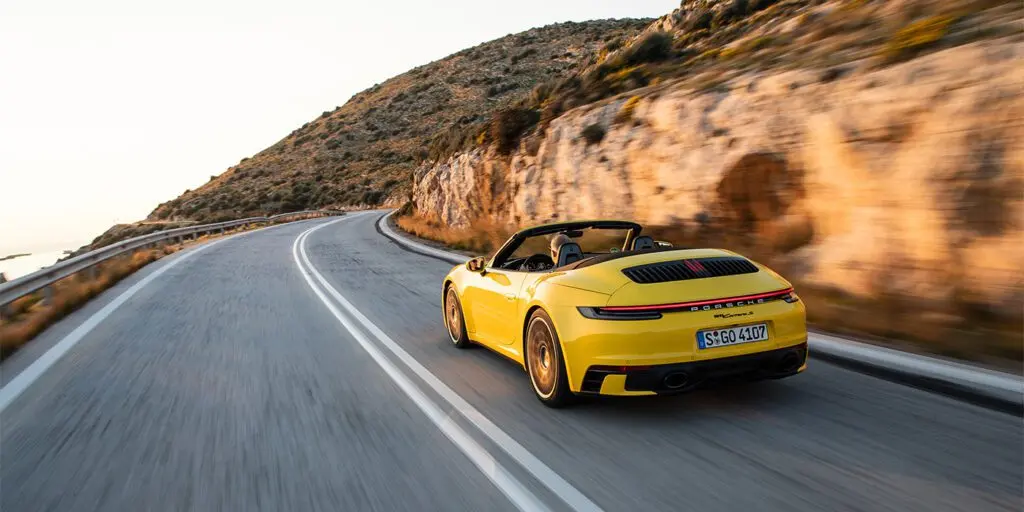
If the welfare of the country was determined by the quality of asphalt on local roads, then Greece would already be three times bankrupt. Only on the main highways, the coverage allows you to drive in Sport mode, and on the mountain serpentines, the road surface, it seems, has not been changed for decades. Surprisingly, even in these conditions, the 911 does not shake the soul out of you. The chassis engineers were not cunning when they talked about a wider range of suspension settings. It is enough to return to Normal - and the entire micro-profile of the road, clearly transmitted to the body in sport mode, immediately disappears.
New dampers and stiffer springs are just the tip of the iceberg. Much more changes in the behavior of the car on the arc were made by the widened wheel track. Fueling the 911 into corners has never been easier. It seems that now you can completely forget about the nuances of controlling a car with a rear-engined layout. All you have to do is turn the steering wheel and the car will follow your command without delay.
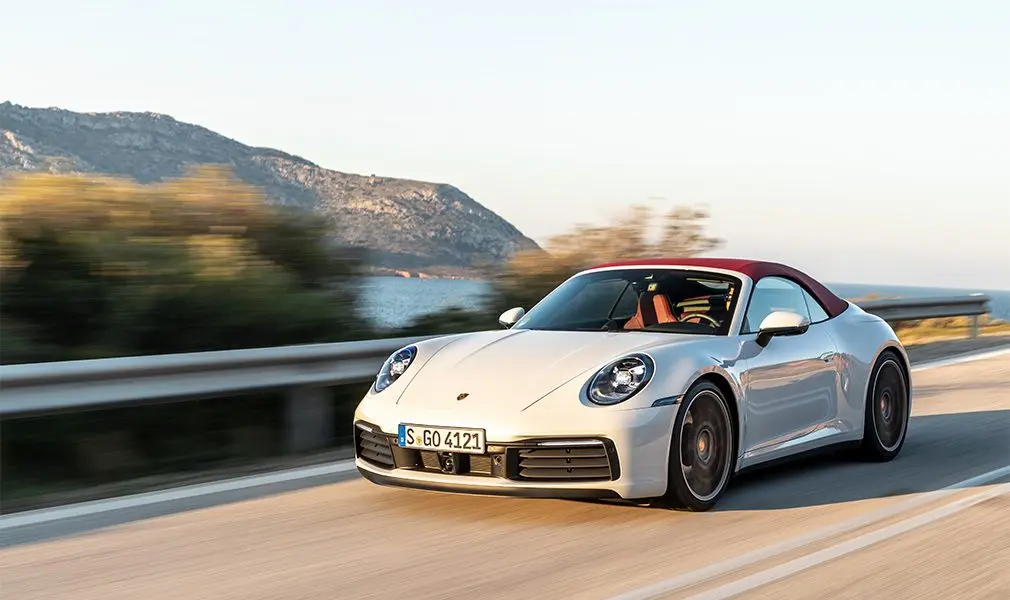
Realizing the increased potential of the chassis would not have been possible without the right tires. In this case, the Pirelli P Zero was the perfect choice. No matter how aggressively I entered corners, the all-wheel drive Carrera 4S clings to the roadway with all four wheels, without even blinking the stability control icon. Of course, this is also the merit of the proprietary PTM all-wheel drive control system, depending on the situation, distributing the moment between the front and rear axles.
Apart from new fuel injectors and a redesigned valve train, the 3,0-liter boxer on the 992 generation is nearly identical to its predecessor's powertrain. But the attachments have changed significantly. The intake design has been completely redesigned, cooling the air has become more efficient, and the turbochargers are now symmetrically located.
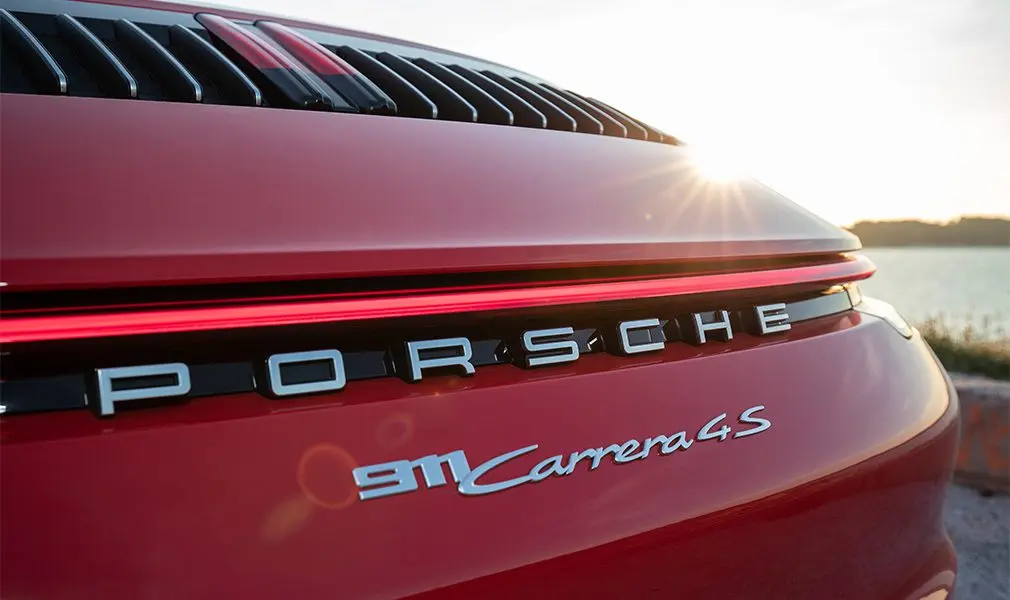
Throttle responses are now more linear, thrust control has become more accurate, although, of course, it was not possible to completely get rid of turbo pickups. The supercharged nature of the engine manifests itself as the rpm rises, and if you switch the mechatronics switch to Sport or Sport Plus, the entire car, following the engine, turns into an effective tool for generating adrenaline.
And this stunning sound of a supercharged boxer with a capacity of 450 hp! Those who claim that with the departure of the aspirated 911 lost its former emotionality due to a more refined soundtrack, simply listened not very carefully. Yes, with the advent of boost under the thrust, the sound of the six-cylinder engine has become flatter, and even opening the muffler flaps will not return those high notes piercing the ears at 8500 rpm. But one has only to release the gas pedal - and behind you will hear a real symphony of muffler shots and chirping hiss of wastegate valves. In general, the amount of mechanical sounds coming from the engine compartment in a 2019 model year is pleasantly surprising. And it definitely creates a special mood while driving.
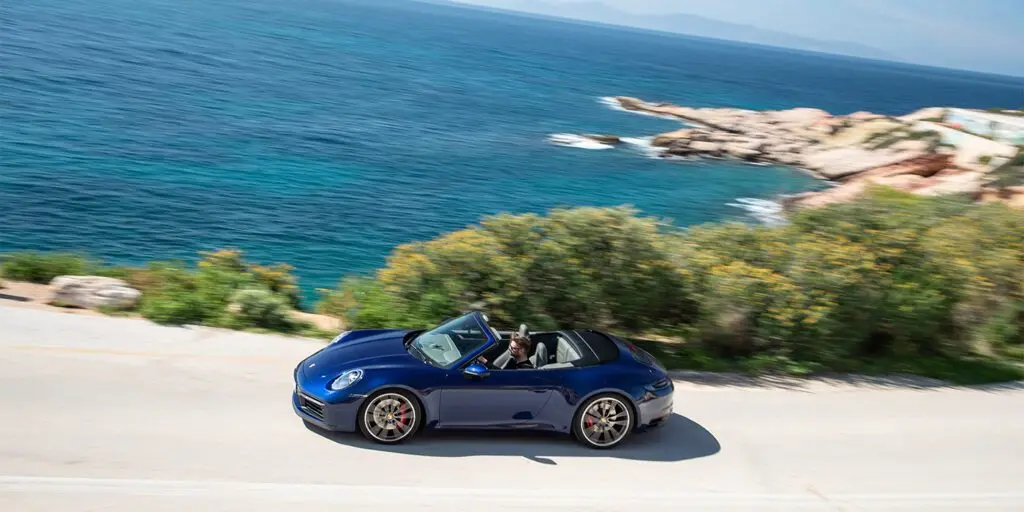
The second part of the route I had to go on a rear-wheel drive Carrera S. But it was not easy to find the right car in the parking lot on the move. If earlier all-wheel drive cars were distinguished by a wider stern with a strip of LEDs between the lights, now the body shape and the configuration of the rear optics are the same for all versions, regardless of the type of drive. The modification can only be determined by the nameplate on the rear bumper.
It was nearing lunchtime, the sun began to warm up the deserted streets of resort towns, which means that you can finally hold down the long-awaited roof folding button for 12 seconds. By the way, it is not necessary to do this on the spot. The mechanism works at speeds up to 50 km / h.
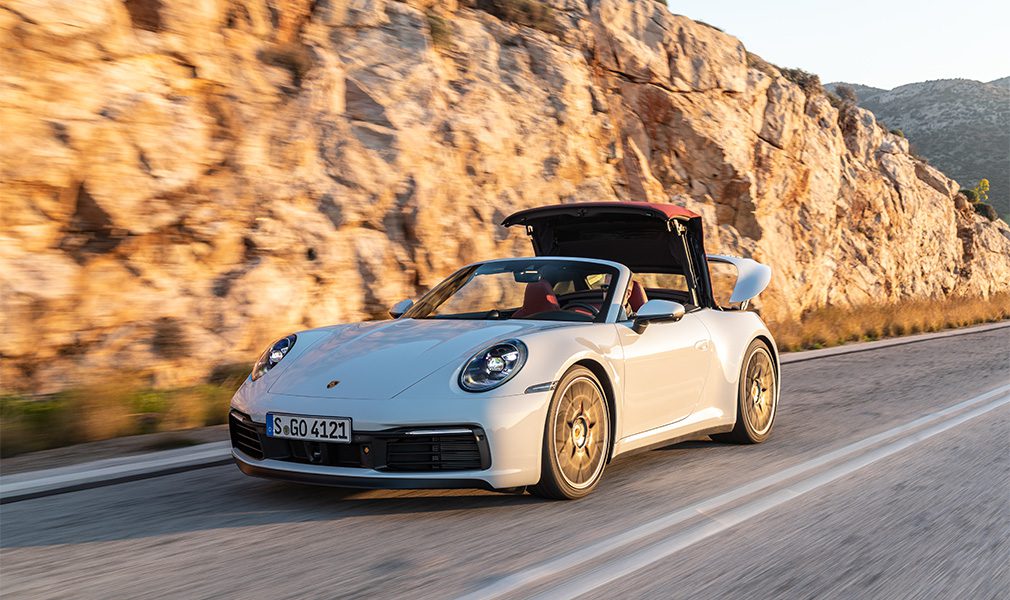
With the top folded down, the second row of seats looks even more like a luggage compartment. However, even in a compartment, these seats are hardly suitable for passengers over five years old. But what do I see! With a different interior trim, I felt like I was in a completely different car. Some parallels with classic Porsches from the 1970s aside, the interior of the 911 is, in a sense, even more austere. That is why each new material in the cabin, each new texture and color reveals the car from a new side.
The steering wheel has not changed in size, but the shape of the rim and spokes is now different. The central tunnel was thoroughly cleaned - there is no longer a scattering of physical buttons, and all functions are protected in the touch screen menu under the front panel visor. And even the joystick of the eight-step robot fits into this minimalism extremely well.
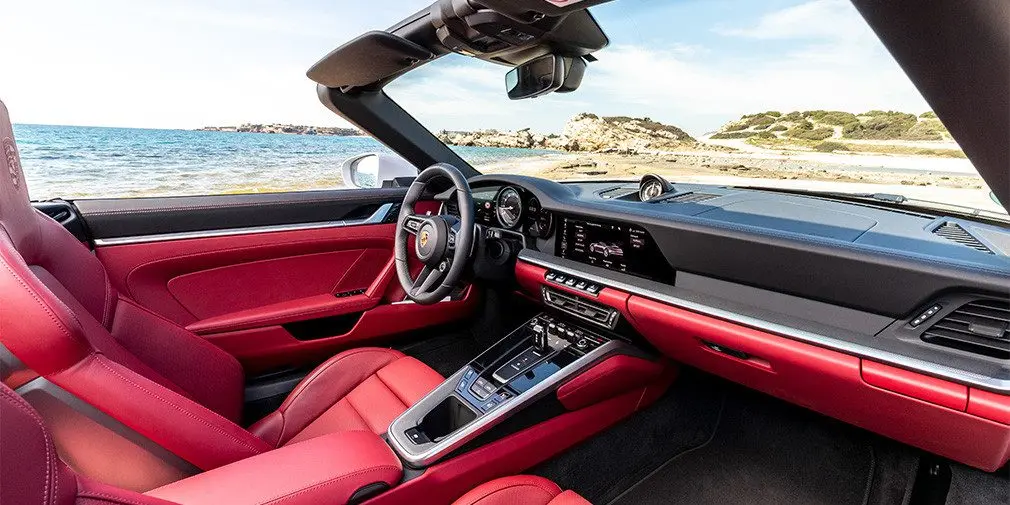
Before your eyes is a huge well of an analog tachometer and a pair of seven-inch screens on either side of it. The solution, familiar to us from the current generation Panamera liftback, looks even more controversial here. Yes, I understand perfectly well that this is a forced step for Porsche in the fight against competitors and, at the same time, new opportunities for users. The screens can be configured as you wish, and on the right one, for example, you can display a large navigation map. At the same time, the beads on the steering wheel partially overlap the extreme scales of the instruments, which makes their use difficult.
As promised by the brand representatives at the technical workshop, the electric power steering has indeed received slightly different settings. There is more feedback on the steering wheel without compromising driver comfort, and sharpness is added in the near-zero zone. This is especially felt on the Carrera S, where the front axle is not overloaded by the drives of the all-wheel drive transmission.
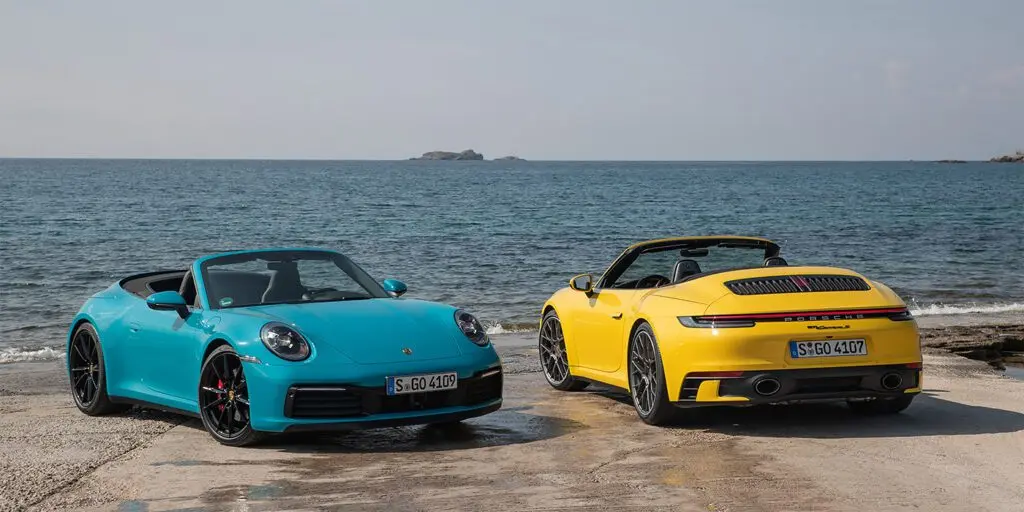
The brake pedal also became electronic, which did not harm either its information content or the effectiveness of deceleration, even with basic cast-iron brakes. Another necessary measure, this time to prepare the car for a hybrid version. Porsche is not giving an exact date for the 911-based hybrid, but given the all-electric Taycan is here, the moment is not far off.
The first Porsche 911 Cabriolet was born almost 20 years after the original model was launched. This is how long it took the Zuffenhausen company to decide on the soft roof experiment. Since then, convertibles have been an integral part of the 911 family, as have the Turbo versions, for example. And without those, and without others, today it is already impossible to imagine the existence of a model.
| Body type | Two-door convertible | Two-door convertible |
| dimensions (length / width / height), mm | 4519/1852/1300 | 4519/1852/1300 |
| Wheelbase, mm | 2450 | 2450 |
| Curb weight, kg | 1515 | 1565 |
| engine's type | Petrol, O6, turbocharged | Petrol, O6, turbocharged |
| Working volume, cubic meters cm | 2981 | 2981 |
| Power, hp with. at rpm | 450/6500 | 450/6500 |
| Max. cool. moment, Nm at rpm | 530 / 2300-5000 | 530 / 2300-5000 |
| Transmission, drive | Robotic 8-st, rear | Robotic 8-speed full |
| Max. speed km / h | 308 | 306 |
| Acceleration 0-100 km / h, s | 3,7 (3,5) * | 3,6 (3,4) * |
| Fuel consumption (city / highway / mixed), l | 10,7/7,9/8,9 | 11,1/7,8/9,0 |
| Price from, $. | 116 172 | 122 293 |

